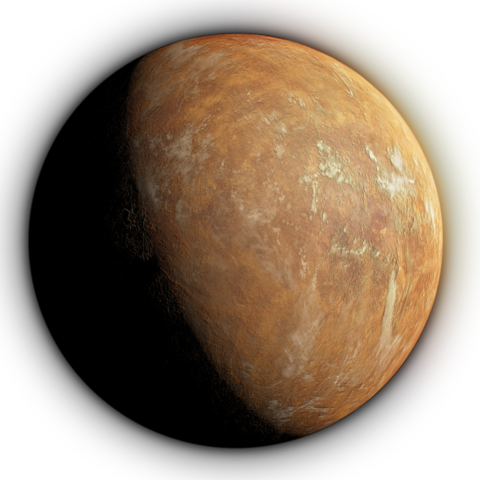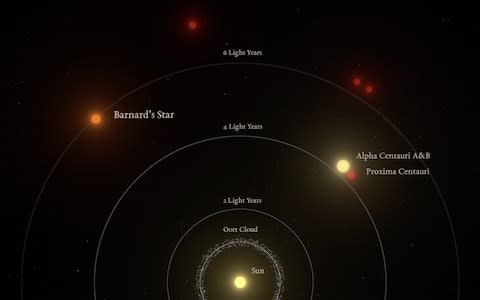Super-Earth discovered just six light years away

Astronomers have discovered a Super-Earth in orbit around one of the closest stars to the Sun and it may have the conditions to support life.
The potentially rocky planet, known as Barnard's star b, has a mass of at least 3.2 times that of the Earth, and it orbits around its host star once every 233 days.
The results, published in the journal Nature, show the planet lies at a distant region from the star known as the 'snow line' well beyond the habitable Goldilocks zone where it is neither too hot or too cold for liquid water.
But although the planet’s surface is estimated to be around -274F (-170C) scientists believe that if it had a substantial atmosphere it could create a greenhouse effect and a more hospitable temperature.
Dr Guillem Anglada Escudé, from Queen Mary's School of Physics and Astronomy, said: "Barnard's star is an infamous object among astronomers and exoplanet scientists, as it was one of the first stars where planets were initially claimed but later proven to be incorrect. Hopefully we got it right this time."

At nearly six light-years away Barnard's star is the next closest star to the Sun after the Alpha Centauri triple system.
It is a type of faint, low-mass star called a red dwarf. Red dwarfs are considered to be the best places to look for exoplanet candidates, which are planets outside our solar system. Light from Barnard's Star provides its planet with only 2 per cent of the energy the Earth receives from the Sun leaving the planet in twilight even during the day.
Barnard's star b is the second closest known exoplanet to our Sun. The closest lies just over four light-years from Earth and was also discovered by a team led by Queen Mary's Dr Anglada Escudé in 2016. That exoplanet, called Proxima b, orbits around the red dwarf star Proxima Centauri.

The researchers found the planet by looking for wobbles in a star caused by the gravitational pull of an orbiting planet.
Cristina Rodríguez-López, researcher at the Institute of Astrophysics of Andalusia (IAA-CSIC) and co-author of the paper, comments on the significance of this finding.
"This discovery means a boost to continue on searching for exoplanets around our closest stellar neighbours, in the hope that eventually we will come upon one that has the right conditions to host life".

